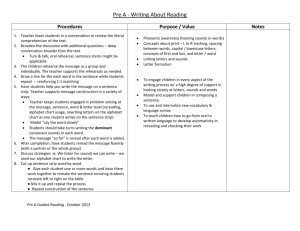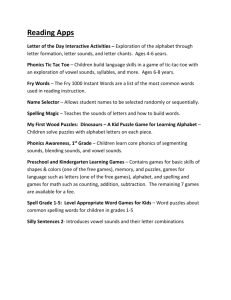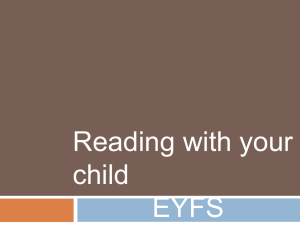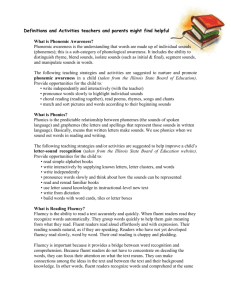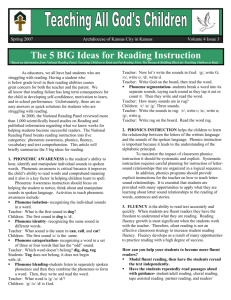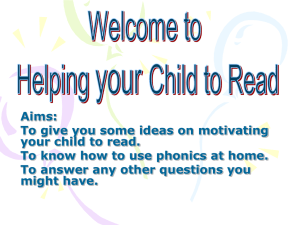Building Blocks of Reading: Essential Skills for Literacy
advertisement
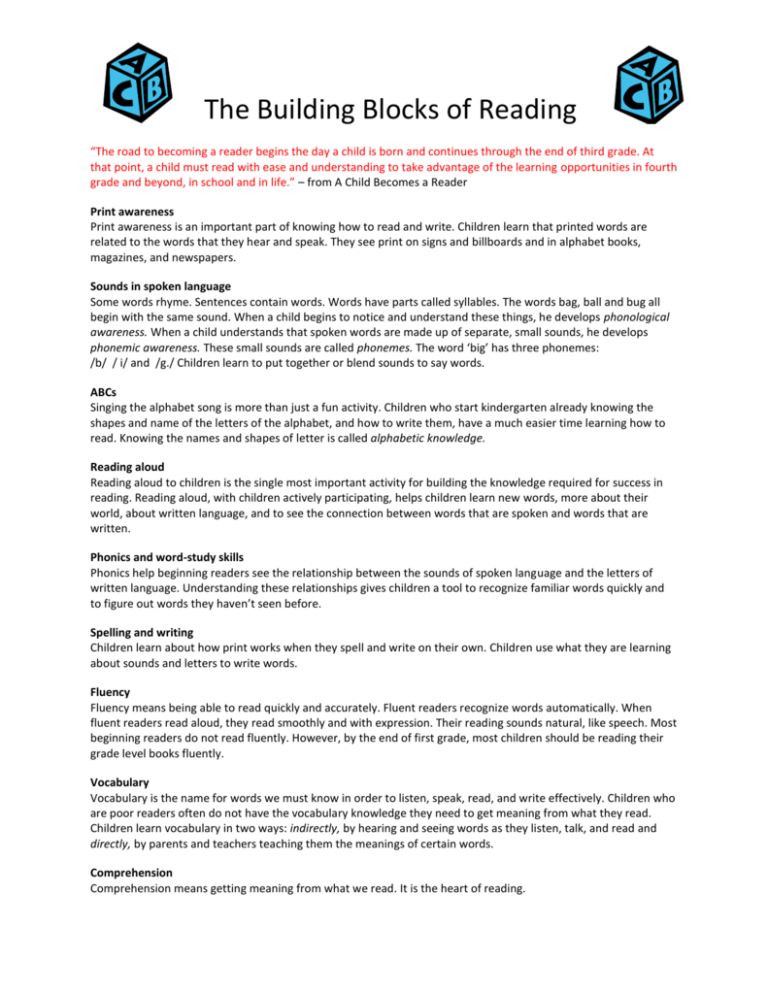
The Building Blocks of Reading “The road to becoming a reader begins the day a child is born and continues through the end of third grade. At that point, a child must read with ease and understanding to take advantage of the learning opportunities in fourth grade and beyond, in school and in life.” – from A Child Becomes a Reader Print awareness Print awareness is an important part of knowing how to read and write. Children learn that printed words are related to the words that they hear and speak. They see print on signs and billboards and in alphabet books, magazines, and newspapers. Sounds in spoken language Some words rhyme. Sentences contain words. Words have parts called syllables. The words bag, ball and bug all begin with the same sound. When a child begins to notice and understand these things, he develops phonological awareness. When a child understands that spoken words are made up of separate, small sounds, he develops phonemic awareness. These small sounds are called phonemes. The word ‘big’ has three phonemes: /b/ / i/ and /g./ Children learn to put together or blend sounds to say words. ABCs Singing the alphabet song is more than just a fun activity. Children who start kindergarten already knowing the shapes and name of the letters of the alphabet, and how to write them, have a much easier time learning how to read. Knowing the names and shapes of letter is called alphabetic knowledge. Reading aloud Reading aloud to children is the single most important activity for building the knowledge required for success in reading. Reading aloud, with children actively participating, helps children learn new words, more about their world, about written language, and to see the connection between words that are spoken and words that are written. Phonics and word-study skills Phonics help beginning readers see the relationship between the sounds of spoken language and the letters of written language. Understanding these relationships gives children a tool to recognize familiar words quickly and to figure out words they haven’t seen before. Spelling and writing Children learn about how print works when they spell and write on their own. Children use what they are learning about sounds and letters to write words. Fluency Fluency means being able to read quickly and accurately. Fluent readers recognize words automatically. When fluent readers read aloud, they read smoothly and with expression. Their reading sounds natural, like speech. Most beginning readers do not read fluently. However, by the end of first grade, most children should be reading their grade level books fluently. Vocabulary Vocabulary is the name for words we must know in order to listen, speak, read, and write effectively. Children who are poor readers often do not have the vocabulary knowledge they need to get meaning from what they read. Children learn vocabulary in two ways: indirectly, by hearing and seeing words as they listen, talk, and read and directly, by parents and teachers teaching them the meanings of certain words. Comprehension Comprehension means getting meaning from what we read. It is the heart of reading.


